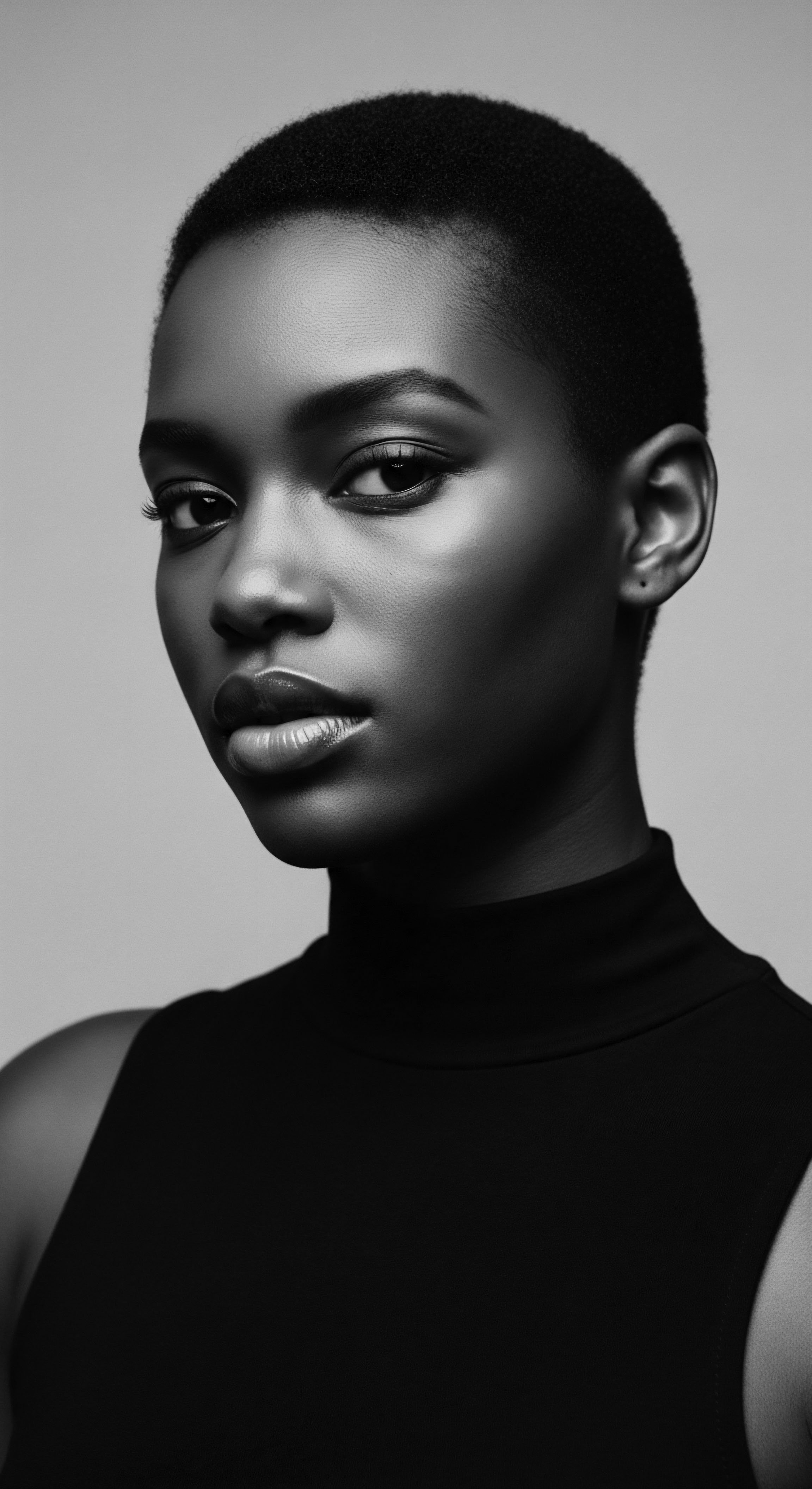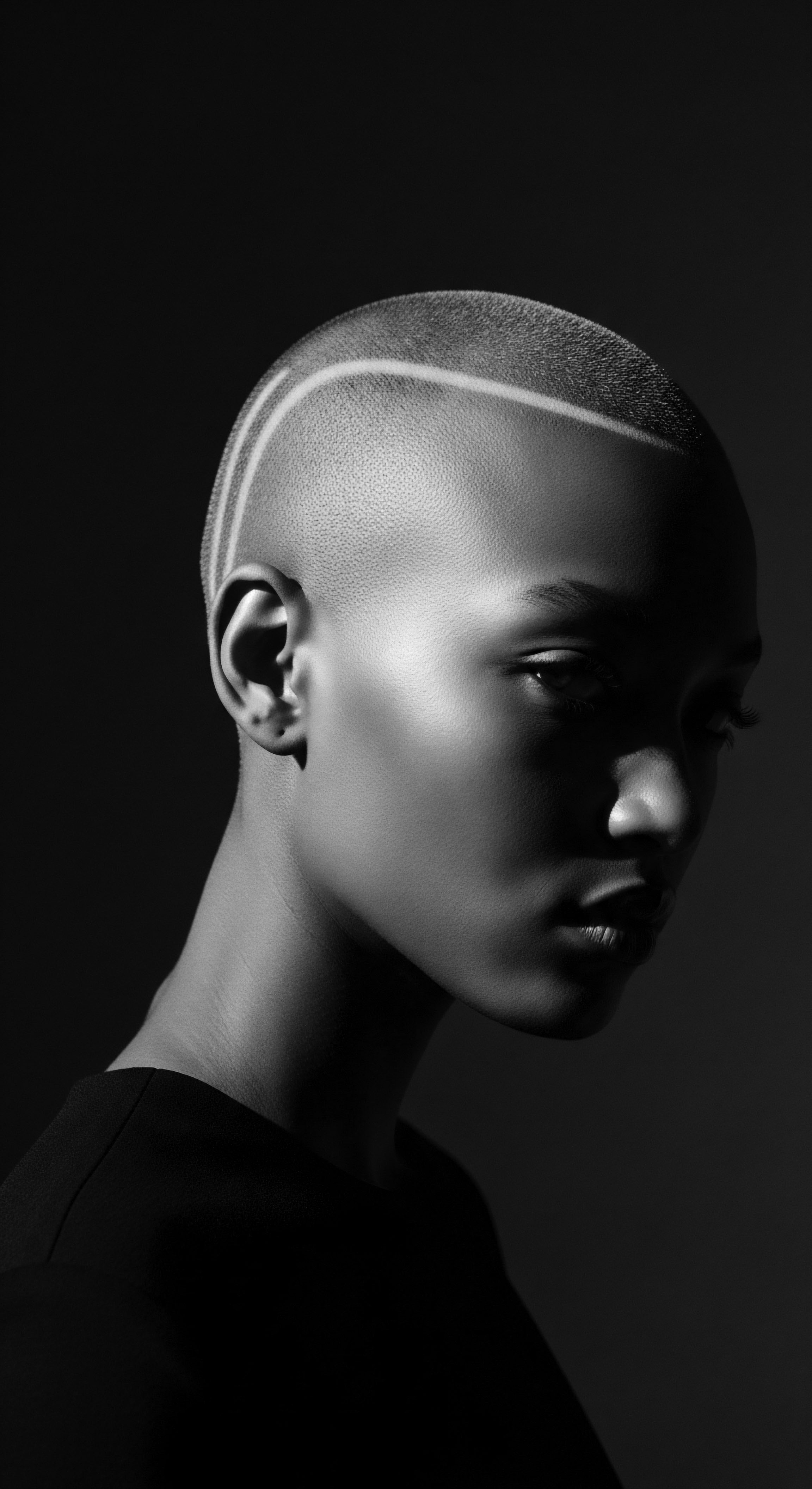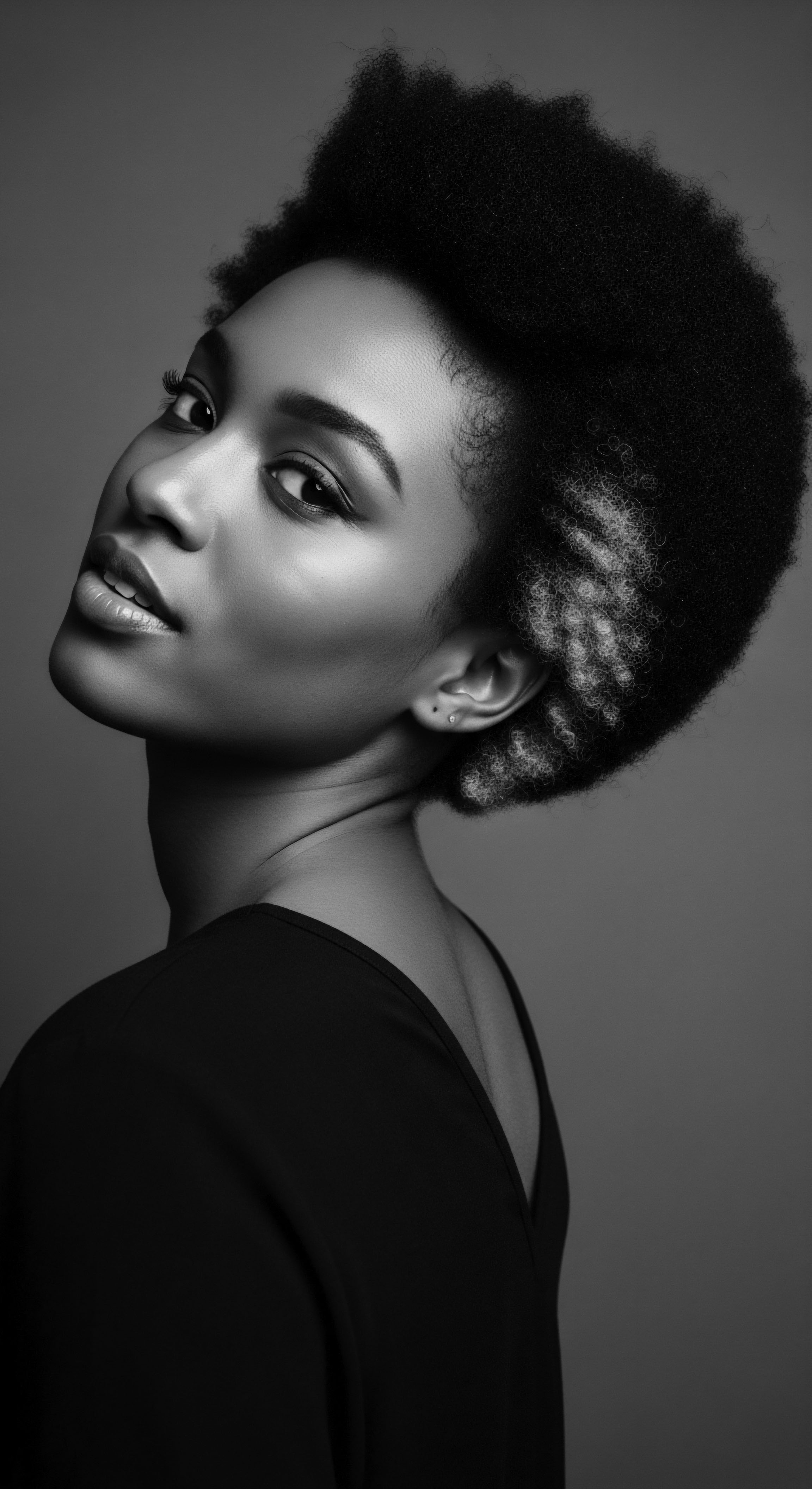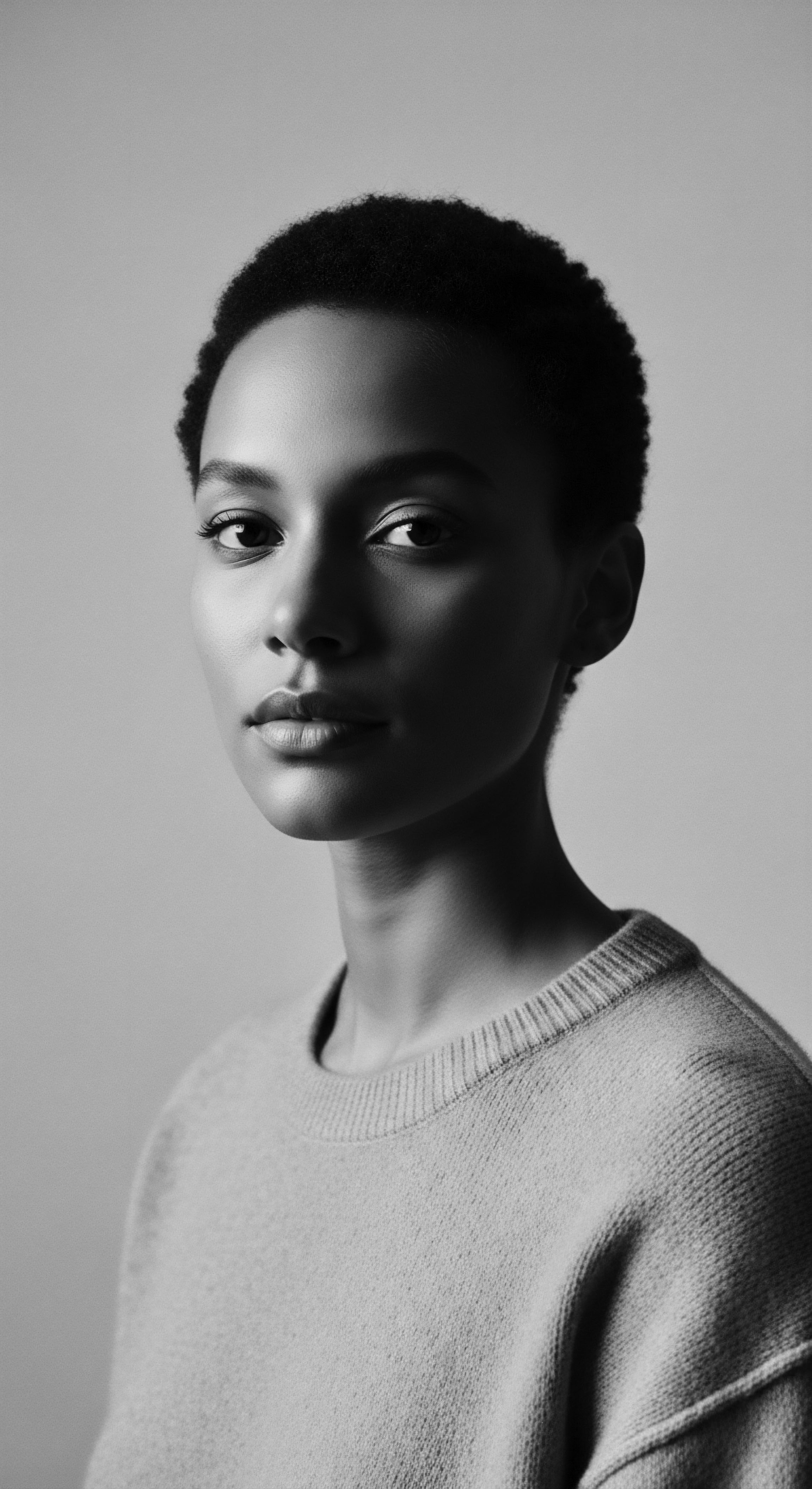
Roots
In the vibrant tapestry of Caribbean heritage, where sun-kissed shores meet the echoes of ancestral drumbeats, a profound connection has always existed between the living strand of hair and the very soil that sustains island life. Our journey into what historical oils deeply conditioned Caribbean textured hair must begin with this understanding ❉ hair, in its myriad coils and crowns, has never been merely an adornment. It is a conduit of memory, a chronicle of survival, and a declaration of identity. For those whose lineage traces through the Middle Passage, the story of hair care is one of adaptation, resilience, and the ingenious rediscovery of natural wisdom.
The quest for deep conditioning, long before chemical compositions or molecular structures were charted in laboratories, was an intuitive response to the intrinsic needs of textured hair. Hair, particularly that with tighter curl patterns, possesses a unique architecture. Its elliptical shaft and the very nature of its coils mean natural sebum often struggles to travel from the scalp to the ends, leaving strands prone to dryness and breakage. This inherent characteristic, combined with the harsh realities of forced migration and colonial environments, made the quest for conditioning agents not a luxury, but a fundamental act of preservation.

What is the Hair’s Elemental Design?
To truly grasp the conditioning power of these historical oils, one must first appreciate the elemental design of textured hair. Each strand, though seemingly simple, is a complex protein filament. The outermost layer, the Cuticle, consists of overlapping scales, much like shingles on a roof. In straight hair, these scales lie flat, allowing for smooth light reflection and easier passage of oils.
For textured hair, however, the cuticle scales naturally lift more, creating pathways for moisture loss but also avenues for nutrient absorption. The very coiling of the hair shaft contributes to points of weakness, making it susceptible to mechanical stress. Therefore, traditional conditioning aimed not just at superficial shine, but at fortifying the hair’s very core.
Ancestral practices across Africa, which formed the bedrock of Caribbean hair heritage, recognized this need. They turned to the botanical wealth of their lands. When displaced, those same ingenious hands, minds, and spirits sought parallel remedies in their new island homes, recognizing familiar properties in unfamiliar flora. This continuity, this unwavering commitment to hair’s vitality even in the face of immense adversity, speaks volumes about its profound cultural weight.

How Did Historical Oils Intertwine with Hair Anatomy?
The oils that rose to prominence in Caribbean hair care did so not by chance, but due to their specific compositions and the ways they interacted with the unique structure of textured hair. These oils were agents of moisture, protection, and nourishment. Their efficacy was often rooted in their ability to penetrate the hair shaft, rather than simply coating the exterior.
Oils with smaller molecular weights, particularly those rich in certain fatty acids, were particularly adept at this deep work, reaching beyond the cuticle to strengthen the inner protein structure of the hair. This deep action provided a shield against the humidity, sun, and daily rigors of life on the islands, mitigating damage and bolstering resilience.
A key aspect of ancestral understanding involved a holistic view, where hair health was inseparable from overall well-being. The selection of oils was thus not purely cosmetic. Many possessed properties extending beyond simple conditioning, hinting at a broader healing tradition.
The historical oils of the Caribbean were chosen for their deep conditioning abilities, reflecting an ancestral understanding of textured hair’s unique anatomical needs.
The lexicon of textured hair, as spoken through generations, also speaks to this deep heritage. Terms like “good hair,” a painful legacy of colonial beauty standards, contrasted with the inherent strength and beauty of coily textures. Yet, beneath these imposed classifications, a language of inherent worth always persisted, especially within the sanctuary of communal hair rituals. This intrinsic value, passed through whispered wisdom and gentle hands, is where the true story of Caribbean hair conditioning resides.
- Hair Shaft Structure ❉ Understanding the cuticle’s role and the challenges of natural sebum distribution in coily hair.
- Environmental Adaptation ❉ How traditional oils helped hair withstand tropical climates and historical hardships.
- Chemical Composition ❉ The molecular makeup of favored oils that allowed for deeper penetration and conditioning.

Ritual
The act of conditioning textured hair in the Caribbean was seldom a solitary, clinical process. It was, and often remains, a ritual steeped in communal care and the passing of inherited wisdom. From the sun-drenched yards where stories were shared, to the hushed evenings under the glow of a kerosene lamp, the application of historical oils became a sacred practice. It was a time when hands connected, stories flowed, and the legacy of self-care, a quiet rebellion against the forces that sought to strip dignity, was faithfully upheld.
Among the pantheon of oils, Coconut Oil stands as a foundational element of Caribbean hair heritage. Its presence is so interwoven with island life that it transcends mere ingredient status; it is a symbol of sustenance and healing. Sourced directly from the abundant coconut palms that fringe Caribbean coasts, this oil was, and still is, often prepared through traditional methods ❉ the grating of fresh coconut meat, the pressing to yield a milky liquid, and then a slow, gentle heating to separate the pure, luminous oil.
This process, often carried out communally, deepened its cultural significance. The lauric acid content of coconut oil, a medium-chain fatty acid, gives it a unique capacity to penetrate the hair shaft deeply, binding with hair proteins and reducing hygral fatigue, the stress caused by repeated swelling and drying of hair.
Another profound oil, steeped in resistance and resilience, is Jamaican Black Castor Oil (JBCO). Its very genesis in the Caribbean diaspora during the period of enslavement (1740-1810) speaks to ingenuity and survival. Enslaved Africans, drawing upon ancestral knowledge of castor plants, developed a distinct processing method ❉ roasting the beans before grinding and boiling them. The resulting ash, incorporated into the oil, lends JBCO its characteristic dark color and slight alkalinity.
This traditional preparation, unique to the Caribbean, sets it apart from other castor oils and contributes to its efficacy. JBCO, rich in ricinoleic acid, has long been revered for its ability to stimulate blood circulation to the scalp, promoting hair strength and reducing breakage.

What Traditional Uses Defined Hair Oiling?
The application of these oils was embedded in specific styling techniques and daily routines. Oiling was not simply about moisturization; it was an integral step in detangling, styling, and protecting the hair. For individuals with intricate coil patterns, the slip provided by oils allowed combs and fingers to navigate strands with less friction, preventing painful pulling and breakage. This practice allowed for the creation of traditional styles that held cultural meaning, whether protective braids or elaborate wrapped styles.
Palm Oil, particularly its West African variant, also traveled with the enslaved across the Atlantic, finding a place in Caribbean hair care. Rich in vitamins A and E and lauric acid, it was employed for its ability to nourish the scalp, promote thicker strands, and combat hair loss. Its deep reddish hue, when unprocessed, carried echoes of its ancestral homeland. While perhaps less universally adopted than coconut or castor oil across the diverse Caribbean islands, its localized presence speaks to the continuity of specific African regional practices adapting to new environments.
The integration of oils like coconut and Jamaican Black Castor Oil into daily grooming created a language of care and cultural continuity.
The tools employed in these rituals were often simple, yet profoundly effective ❉ the warmth of human hands to distribute the oil, wide-toothed combs crafted from natural materials, and the use of scarves or cloths to protect treated hair. The very simplicity underscores a philosophy of resourcefulness and making the most of what nature provided.
| Oil Coconut Oil |
| Key Heritage Aspect A ubiquitous island resource, representing daily sustenance and care, often prepared communally. |
| Notable Conditioning Property Deep penetration due to lauric acid; protein-binding to reduce hygral fatigue. |
| Oil Jamaican Black Castor Oil |
| Key Heritage Aspect A product of diasporic ingenuity and adaptation during enslavement, carrying a narrative of resilience. |
| Notable Conditioning Property High ricinoleic acid content stimulating scalp circulation; strengthens hair, reduces breakage. |
| Oil Palm Oil (West African) |
| Key Heritage Aspect A direct cultural transfer from specific African regions, symbolizing continuity of ancestral practices. |
| Notable Conditioning Property Rich in vitamins A and E, lauric acid; promotes thicker growth, scalp nourishment. |
| Oil Olive Oil |
| Key Heritage Aspect Integrated through Mediterranean influences and availability, adopted for its versatile conditioning. |
| Notable Conditioning Property Mono-unsaturated fatty acids provide deep moisturization; anti-inflammatory for scalp. |
| Oil These oils, born of the land and ancestral wisdom, became cornerstones of Caribbean hair care, each carrying its own story of resilience and healing. |
The ritualistic nature of hair oiling provided more than physical conditioning. It offered a psychological balm, a moment of connection and self-reverence in times that often denied such courtesies. These practices preserved a sense of self and belonging, ensuring that the roots of identity remained vibrant despite attempts at erasure. The act of applying oil became a quiet protest, a continuous thread connecting past generations to those yet to come.

Relay
The enduring presence of historical oils in Caribbean textured hair care speaks to a relay of knowledge, a torch passed from generation to generation, adapting and persisting through changing landscapes. This continuity represents a living archive, where the understanding of hair’s biology meets the profound wisdom of ancestral practices. The effectiveness of these oils, long before modern science articulated their mechanisms, was understood through observed efficacy and a deep, intuitive connection to the natural world.
Consider the daily and nightly rituals. For textured hair, prone to dryness, moisture retention is a continuous pursuit. Oils played a significant part, not just as hydrators, but as sealants.
After water-based moisturizers, a light application of a penetrating oil like coconut oil, or a heavier sealing oil like castor oil, would lock in that precious hydration, minimizing moisture loss throughout the day and especially overnight. This layered approach, a testament to practical wisdom, ensured that the hair remained pliable and protected.

How Did Ancestral Wellness Shape Hair Care Practices?
The holistic influences on hair health in Caribbean traditions extend far beyond topical application. Ancestral wellness philosophies often viewed the body as an interconnected system. The same oils used for hair might also be used for skin, for medicinal purposes, or even for culinary applications. This integrated approach meant that the health of the scalp, a foundational element for healthy hair growth, received consistent attention.
Scalp massages with oils, for example, were not merely for product distribution, but were believed to stimulate circulation, nourishing hair follicles and promoting vitality. This practice aligns with contemporary understanding of scalp health as crucial for robust hair growth.
In a compelling example of ancestral knowledge intersecting with modern scientific validation, the ricinoleic acid in Jamaican Black Castor Oil has been studied for its ability to increase blood flow to the scalp and its anti-inflammatory properties. This confirms what generations of Caribbean individuals understood through practice ❉ regular application could promote hair growth and soothe scalp irritations. Such insights were not derived from laboratory experiments, but from keen observation, trial, and the collective wisdom accumulated over centuries. The consistent application of these oils was not an isolated act, but part of a larger regimen for hair and overall well-being.

What Role Did Nighttime Rituals Play in Conditioning Textured Hair?
Nighttime rituals became a cornerstone of deep conditioning and protection. The vulnerability of textured hair to friction and tangling during sleep was recognized. The use of head coverings, such as bonnets, wraps, or scarves, made from smooth materials like satin or silk, became a widespread practice. This protective layer, often secured over freshly oiled or moisturized hair, allowed the conditioning agents to work undisturbed overnight, sealing in moisture and preventing the roughing of the cuticle.
This simple yet effective measure minimized breakage and preserved style, a testament to the meticulous care given to textured hair within these traditions. It transformed the hours of rest into a continuous conditioning session, allowing the hair to truly absorb and benefit from the applied oils.
The ongoing challenge of dryness, frizz, and breakage in textured hair was met with practical, accessible solutions rooted in the very environment. Beyond the daily oiling, deeper treatments were developed. Hot oil treatments, where warmed oils were applied to the hair and allowed to penetrate before washing, provided intensive conditioning.
This warming enhances the oil’s ability to permeate the hair shaft, allowing for a more profound conditioning effect. These were often reserved for “wash days,” which themselves became elaborate, time-consuming affairs, reflecting the investment in hair health.
The enduring legacy of these practices is evident in modern hair care. Many contemporary products for textured hair draw inspiration from these ancestral methods, often featuring coconut oil, castor oil, or shea butter as primary ingredients. The continuum of care demonstrates that while formulations may evolve, the fundamental needs of textured hair and the wisdom of certain natural remedies remain constant. This lineage underscores a profound cultural truth ❉ the strength and beauty of textured hair are intertwined with the wisdom of those who came before us.
The consistent application of historical oils, often within intricate nighttime rituals, reflects generations of practical wisdom for nurturing textured hair.
The problem-solving compendium, passed down orally, addressed various hair concerns. For a dry, itchy scalp, perhaps a warm olive oil massage would be recommended. For hair struggling with breakage, a regular application of Jamaican Black Castor Oil was the inherited prescription. These were not abstract solutions; they were lived, tested, and shared experiences, woven into the fabric of community life.
The following list illustrates how different traditional oils addressed specific needs, showcasing an ancestral understanding of hair challenges:
- Coconut Oil ❉ Used to prevent protein loss during washing, maintaining hair’s strength.
- Jamaican Black Castor Oil ❉ Applied to soothe itchy scalp conditions and promote thicker hair appearance.
- Olive Oil ❉ Employed for its ability to detangle hair and reduce frizz, particularly for curls.
- Palm Oil ❉ Valued for its capacity to nourish the scalp and potentially reduce hair fall, contributing to overall hair vitality.

Reflection
The story of historical oils and Caribbean textured hair is far more than a chapter in a beauty manual; it is a profound meditation on the enduring spirit of a people. It speaks to the ingenuity of adaptation, the quiet power of cultural preservation, and the steadfast commitment to self-definition in the face of profound adversity. These oils, borne of sun and soil, became sacred vessels of conditioning, not just for the physical strand, but for the soul of the community itself.
Each drop applied, each strand tended, carried the weight of history and the promise of tomorrow. This ancestral practice, steeped in intention and care, formed a living, breathing archive of resilience.
The wisdom embedded in the use of coconut oil, Jamaican Black Castor Oil, palm oil, and olive oil reminds us that true conditioning extends beyond mere hydration. It is about connection ❉ connecting with the earth’s bounty, with the hands of those who taught us, and with the deep lineage of our hair heritage. The textured helix, in its beautiful complexity, holds not only genetic code but also the echoes of collective memory.
As we continue to understand its elemental biology through modern science, we find that ancient practices often carry profound truths, patiently awaiting rediscovery. This journey through the oils that deeply conditioned Caribbean textured hair illuminates a continuous narrative of identity, strength, and unapologetic beauty, a legacy that continues to unfold, inspiring future generations to honor their crowns.

References
- Byrd, A. & Tharps, L. (2014). Hair Story ❉ Untangling the Roots of Black Hair in America. St. Martin’s Griffin.
- Jacobs-Huey, L. (2006). From the Kitchen to the Parlor ❉ Language and Becoming in a Black Women’s Hair Salon. Oxford University Press.
- Warner-Lewis, M. (1991). Guinea’s Other Suns ❉ The African Dynamic in Trinidad Culture. Majority Press.
- Warner-Lewis, M. (1997). Central Africa in the Caribbean ❉ Transcending Time, Transforming Cultures. University of West Indies Press.
- Warner-Lewis, M. (2003). The Sacred and the Profane ❉ African and European Roots of Jamaican Popular Culture. University of West Indies Press.
- Tate, S. (2016). Black Bodies, Black Hair, Black Beauty. Palgrave Macmillan.
- Johnson, H. (2016). Black Women, Hair, and Identity ❉ Combing Through the Roots. Routledge.
- Murray, M. L. (2010). The Politics of Hair in Santo Domingo ❉ Negotiating Race, Nation, and Beauty in the Dominican Republic. Temple University Press.
- Candelario, G. E. (2007). Black behind the Ears ❉ Dominican Racial Identity from Museums to Beauty Shops. Duke University Press.
- Rosado, R. (2003). A Grammar of Hair. In J. R. Smith & A. M. H. Peterson (Eds.), Cultural Perceptions of Hair. Ashgate Publishing.
